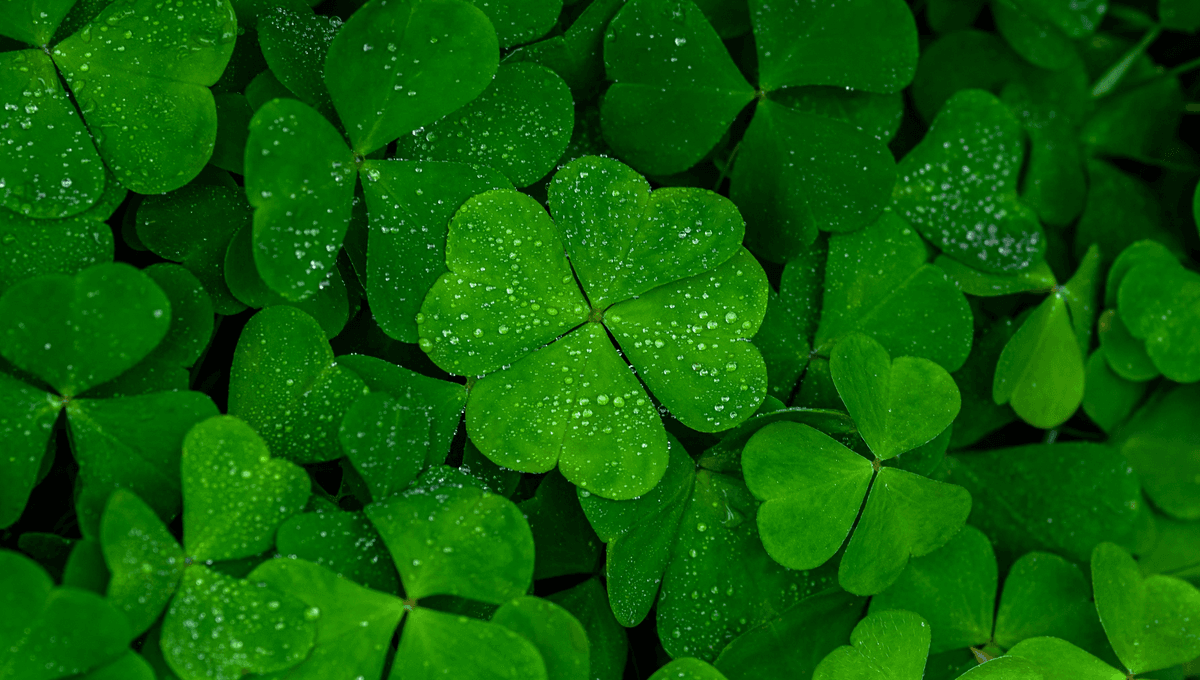
What makes four leaved clovers so lucky? Perhaps it’s simply because they’re so rare – by definition, finding one is proof that you’ve been graced with a little extra good fortune for the day.
But how rare are they really? One commonly-heard statistic holds that only about one in 10,000 clovers have four leaves, making them about 500 times more rare among clovers as natural redheads are among humans. But that’s not exactly true – for a couple of reasons.
Firstly, the numbers are a bit more optimistic than all that. In 2017, a team of researchers working for the website Share the Luck carried out an analysis of a whopping 5.7 million clovers, finding that the likelihood of finding one four-leaf clover was actually more like one in 5,000. That’s twice as likely as the traditionally held “one in 10,000” statistic, so your chances of finding one are already looking up quite a bit.
But even then, there are more factors at play. With some types of clover – and some careful environmental planning – the chances of growing that extra leaf can be way higher.
“Breeders have selected varieties that produce as much as 50 percent of the leaves with four leaflets,” University of Delaware Botanic Gardens director John Frett told Martha Stewart. “Combined with the fact that clover spreads by underground stems, a large patch of clover can grow with an increased ability to produce greater than normal leaves with four leaflets, leading to an increased rate of discovering the elusive four-leaf clover.”
Take, for example, Suzi Mekhitarian: an Australian woman who probably couldn’t believe her good luck when, in 2014, she stumbled upon a patch of no fewer than 21 four-leaved clovers in her front yard. If her lawn were typical, the odds of that happening should have been astronomical – around one in a quinvigintillion, or 1 followed by 78 zeroes.
That makes it sound all but impossible – and yet, Australian Botanic Garden director of science Brett Summerell remarked at the time, “I hear about it happening every five or six years.”
Why? In general, having four leaves is a recessive trait in clover – and in plants, such traits can be even harder to pass on than in animals. “Whereas human chromosomes come in matched pairs, clovers have four copies of each chromosome per cell,” explained science and technology educator Luis Villazon in an explainer for Science Focus.
“The gene responsible for four-leaf clovers is ‘recessive’, which means that the plant will only produce four leaves if it has the four-leaf gene on all four chromosomes, which is a rare occurrence.”
In Mekhitarian’s case, though, something very unusual had happened. “Instead of the dominant gene characteristics of the plant being three leaves, it [was] four, increasing the chances of this occurring in a single patch,” Summerell explained.
“There hasn’t been a great deal of research into this,” he added, “so nobody knows why this occurs.”
Of course, if genetics is the key, perhaps it’s possible to make your own luck, you might think – just select for four leaves over three, the same way humans have engineered so many other species over the millennia. But even today, with gene-editing tech like CRISPR and huge advances in crop sciences, four-leaved clovers remain stubbornly elusive.
“The jury is out on why,” said Vincent Pennetti, a Graduate Research Assistant at the University of Georgia’s College of Agricultural and Environmental Sciences, last year. While the precise genetic markers associated with growing that extra leaf have been known for over a decade, he explained, the plants themselves are more finicky than all that – if environmental conditions such as the weather or soil quality aren’t exactly right, you’ll likely end up with a bog-standard three-leafer.
“[Four leaves is] a really tough trait to do,” said Pennetti’s supervisor, UGA research professor Wayne Parrott. “If daylight or temperatures aren’t right, you won’t see it.”
Source Link: How Rare Are Four Leaved Clovers, Really?